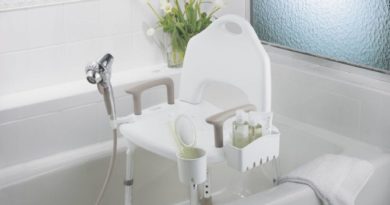How to Seal Off Bathtub Overflow
**Articles may contain links that I earn compensation for if clicked and you make a purchase. As an Amazon Associate, I earn from qualifying purchases. These earnings do not actually impact the price of the product or service.
Have you gotten tired of watching your bathtub overflow? The experience of waking up to see your bathtub overflow could frustrate many of us.
Therefore, homeowners keep on looking for ways to handle such problems. Hence, this guide covers the steps for managing a bathtub overflow.
First of all, these tasks require the proper tool for the job. Once you get the know-how, you’ll need only to apply it to the key part of your bathtub to fix the issue.
Let’s talk about how to seal off bathtub overflow.

Table of Contents
Bathroom Overflow Drain: Overview
How bathtub overflow drains can work to stop a leak is common knowledge. However, you can handle the sealing of an overflow drain without the help of a professional.
Overflow drains function in a straightforward manner. The tub can flood with water when the bottom drain is sealed or plugged. You can find the overflow drain some inches away from the bathtub’s rim.
Meanwhile, if bathwater passes the overflow drain’s height, it can flood your floor. Overflow drains prevent bathwater from flooding or spilling onto the floor.
Hence, why should you use a bathtub overflow drain? A simple reason for using it is that it allows a deeper soak in the bathtub. So, via the overflow drain covers, you can regulate the water level and use only as much as you need.
Simple Methods to Seal Off Bathtub Overflow
 Fasten a Chrome Plate
Fasten a Chrome Plate
Drain covers come with small holes that allow you to drain water from the tub. However, you can seal off the overflow drain by installing a chrome plate. Furthermore, chrome plates do not rust or oxidize when exposed to water.
Chrome plates come in various sizes that can handle any bathtub overflow drain. Meanwhile, these plates need a bit of plumbing work to eliminate the existing overflow drain. You can install the plates with a few screws, but they cost more than the drain covers.
Overflow Drain Cover
A bathtub overflow drain cover is a popular solution that you can plug in all types of bathtubs. As such, it is an easy method you can use to seal up any overflow drain.
Generally, a bathtub overflow drain cover comes in plastic form and uses suction cups to protect the overflow drain. Most drain covers feature a tiny hole at their tops to let the water drain once it reaches a certain level with the tap or shower on.
The drain cover does not need modification or removal of the existing overflow drain. So, it enhances how the bathtub overflow drain work.
Waterproof Sealant
With the support of a waterproof sealant, you can seal the opening when you take out an overflow drain. As a result, you prevent the water flow out of the tub with such a cover.
However, use this method only if you have to fix any other bath-related issue or when looking for new stylistic choices. In other words, this bit is a permanent solution as an overflow cover.
Waterproof Tape
If you want to get rid of a flooded or wet floor, especially for kids’ safety, you might consider using waterproof tape to seal the overflow opening or the bathroom drain cover.
Also, the waterproof tape might eventually give out. When this happens, the bathroom overflow drain can begin to work again. Meanwhile, it will act as a temporary overflow cover.
Flex Seal
A mom might confuse a flex seal with a waterproof sealant. However, the flex seal works differently to produce a waterproof rubber barrier, and it is more versatile when you use it compared to a traditional waterproof sealant.
For instance, a flex seal can seal any plastic drain cover, opening found behind an overflow drain or a pre-existing overflow drain.
How to Seal Off Your Tub Overflow With Household Items
If you have ever carried out a deep soak, you might want to try some of the quick do-it-yourself to seal off your tub.
Also, a bath can return to its original position to allow kids to play around the house with any of the following hacks:

Plumber’s Putty
Many of us have such putty in our toolkits. So, simply place it over the opening of your tub overflow drain. However, ensure that the putty does not peel off.
All in all, a plumber’s putty is usually an easy fix that won’t give in to the underwater pressure.
Duct Tape
Many of us use duct tape to take care of some of our household repairs. You can give your tub overflow drain a temporary seal with duct tape; however, it can leave a sticky residue behind when it falls off.
Hair Elastics
You can take care of your bathroom overflow drain cover with hair elastics. While hair elastics might not come as a suitable seal, they can hold things for at least half an hour. For this, wrap two or three elastics around the overflow drain cover to seal it.
However, taller people might find it difficult to take a proper bath with this solution. The water might not move past the overflow drain pipe, no matter how much space you free up.
When you shut off the bathtub overflow, adding 100mm of water can help you stay covered when you use the tub. So, it is a practical trick to use when taking a bath. In that way, you can fully fill up the tub with hot water.
If you want to enjoy a deep soak, you can use a stopper to prevent water from flowing out of the bathtub drain.
Frequently Asked Questions
1. Must a tub come with an overflow drain?
At the onset of indoor plumbing, people tried many things to ensure that bathtubs do not flood with water. As a result, screws, valves, pipes, and other items were used to keep the water level.
However, the valves and pipes eroded quickly, and the rusty bath tap valve ended up opening when least expected.
The overflow drain works as a backup in situations like this, especially when your main drain remains shut. If the water runs all day, you will not worry about a flood.
2. How do bathtub overflow drains function?
Most baths can carry up to 500mm of water. We advise that you check the capacity of the tub you want to install in your house before buying. You can find the overflow drain at the intended depth’s top.
When you check the back of the overflow plate, you can find a hole at the tub’s side, which is linked to a pipe. Water flows happen when a plug or stopper is removed from the drain.
Final Thoughts
Whether you use a faucet or shower in your bathtub, if it has no hole to allow water flow, you might experience flooding in your bathroom. However, even if handling a leak in your tub is a plumber’s work, you can use this guide to seal off your bathtub overflow.
So, follow these tips and tricks for sealing off your bathtub overflow and preventing any water damage from taking place. Plus, we’ve included several options for the same result.


